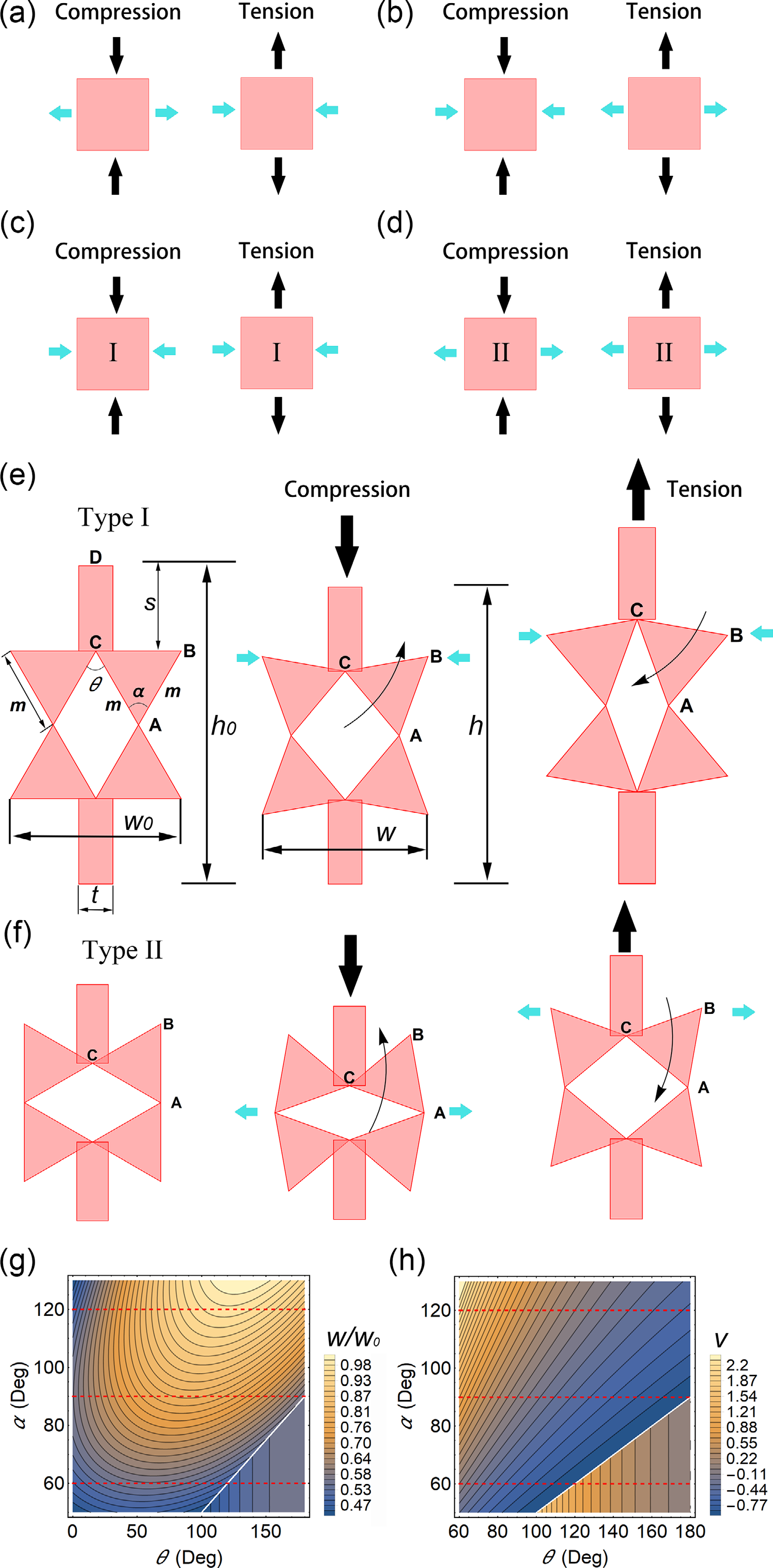This study designed two types of cellular structure mechanical metamaterials with variable, tension/compression-dependent positive/negative Poisson's ratios, and the deformation characteristics of the metamaterials were verified by NOKOV motion capture measurement.
Researchers published a paper on cellular mechanical metamaterials titled "Mechanical Metamaterials with Discontinuous and Tension/Compression-Dependent Positive/Negative Poisson’s Ratio" in the Journal of Advanced Engineering Materials, which is indexed by SCI and EI.
This paper proposes two types of cellular structure mechanical metamaterials with tension/compression-dependent positive/negative Poisson's ratios and fast Poisson's ratio variation capabilities, and the deformation behavior of the metamaterials was verified by NOKOV motion capture. This study can be applied in the fields of energy absorption devices, soft robotics, and tissue engineering scaffolds.
Citation:
Yang N, Deng Y, Zhao S, et al. Mechanical metamaterials with discontinuous and tension/compression‐dependent positive/negative Poisson's ratio[J]. Advanced Engineering Materials, 2022, 24(3): 2100787.
Background:
As a new type of engineered material, metamaterials have properties that are not found in naturally occurring materials. Existing studies have developed various metamaterials that exhibit unique mechanical and electromagnetic properties, such as negative Poisson's ratios. However, current designs usually only achieve deformation behavior in a single direction, and the control of positive/negative Poisson's ratios is not intuitive enough, limiting their applications in engineering.
Contributions:
1. This paper proposes two types of cellular structure units with tension/compression-dependent positive/negative Poisson's ratios and fast Poisson's ratio variation capabilities. By changing the geometric design of the unit, a discontinuous change in Poisson's ratio under strain can be achieved.
2. The experiments proved that the deformation behavior of the metamaterials is independent of the specific properties of the materials and is determined by the geometric design of the structure.
3. The experiments verified the predictions of y a simple analytical model and finite-element method calculations, proving the robustness of the metamaterials' deformation behavior.

Figure 1 Design Method
Experiments and Results:
1. Unit Deformation:
The deformation of the metamaterials was tracked by NOKOV motion capture system. The experimental results were similar to the predictions of finite element analysis (FEA) and the pure mechanism model, indicating that the deformation behavior is independent of the mechanical properties of the materials and is determined by the geometric design of the structure.

Figure 2 Discontinuous and tension/compression-dependent positive/negative PR in one unit
Similar deformation behavior was observed even when using rubber materials with different hardness, including tension/compression-dependent positive/negative Poisson's ratios and skipping points.
2. Unit deformation Conflicts between Horizontal Neighbors under Compression
When multiple units interact along the x-direction under compression, the skipping points can still be observed. However, due to conflicts and interactions between adjacent units under compression, the strain required for the transition from negative to positive Poisson's ratio decreases. Nevertheless, the discontinuous and tension/compression-dependent positive/negative Poisson's ratio still exists.
3. 2D and 3D cellular Structure Deformation
This paper designed and manufactured 2D and 3D cellular structures, and their deformation behavior was tested through experiments and simulations. The results show that these structures also exhibit tension/compression-dependent positive/negative Poisson's ratios.
NOKOV motion capture system records the deformation behavior of metamaterials, outputting high-precision position data, helped to verify the metamaterials' Poisson's ratio property.